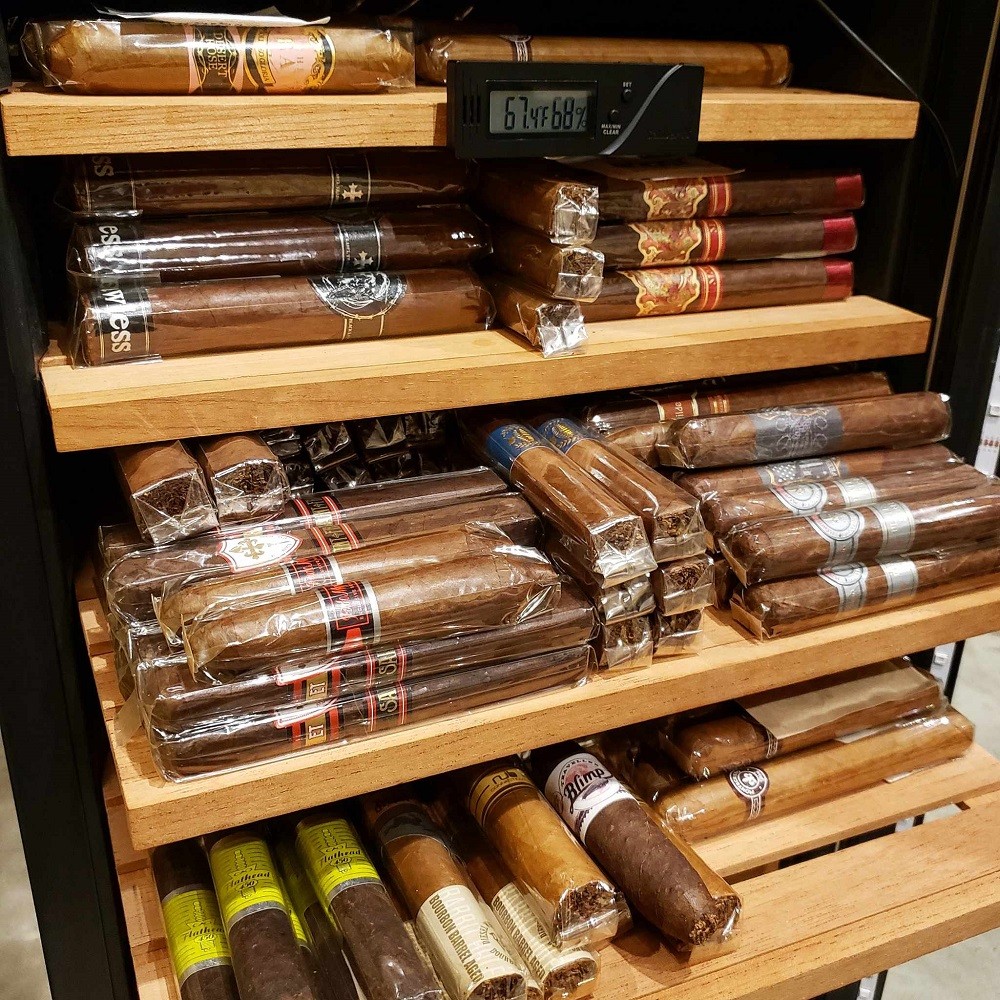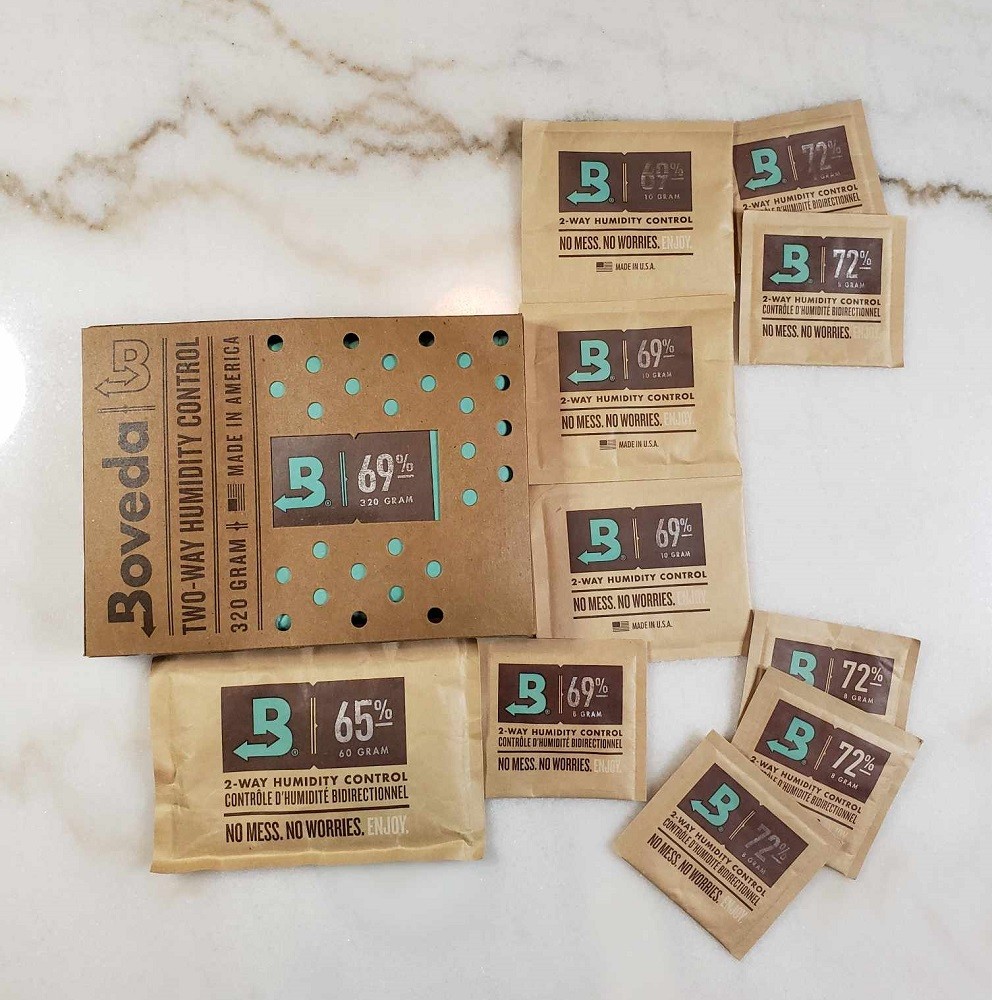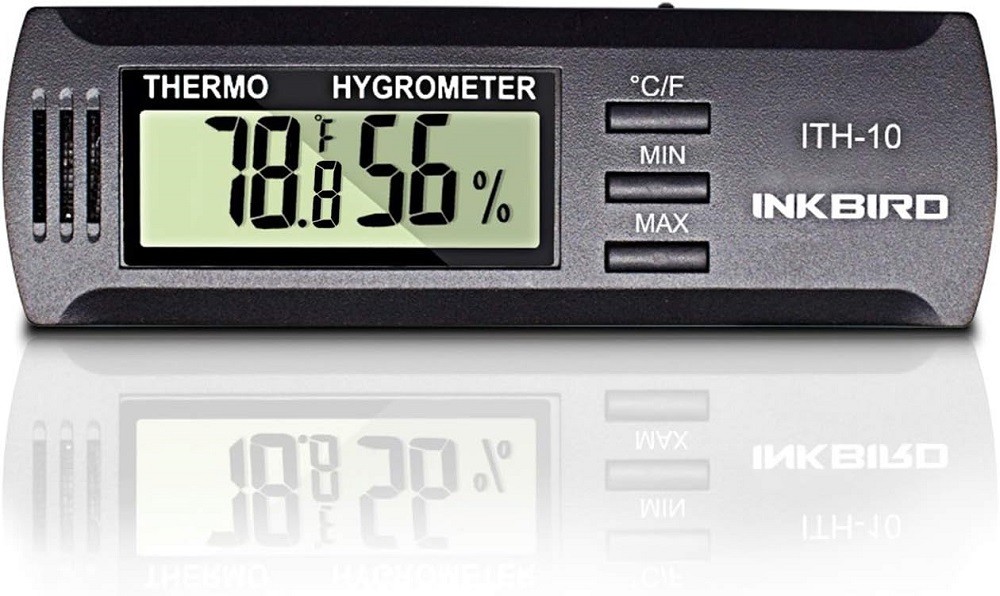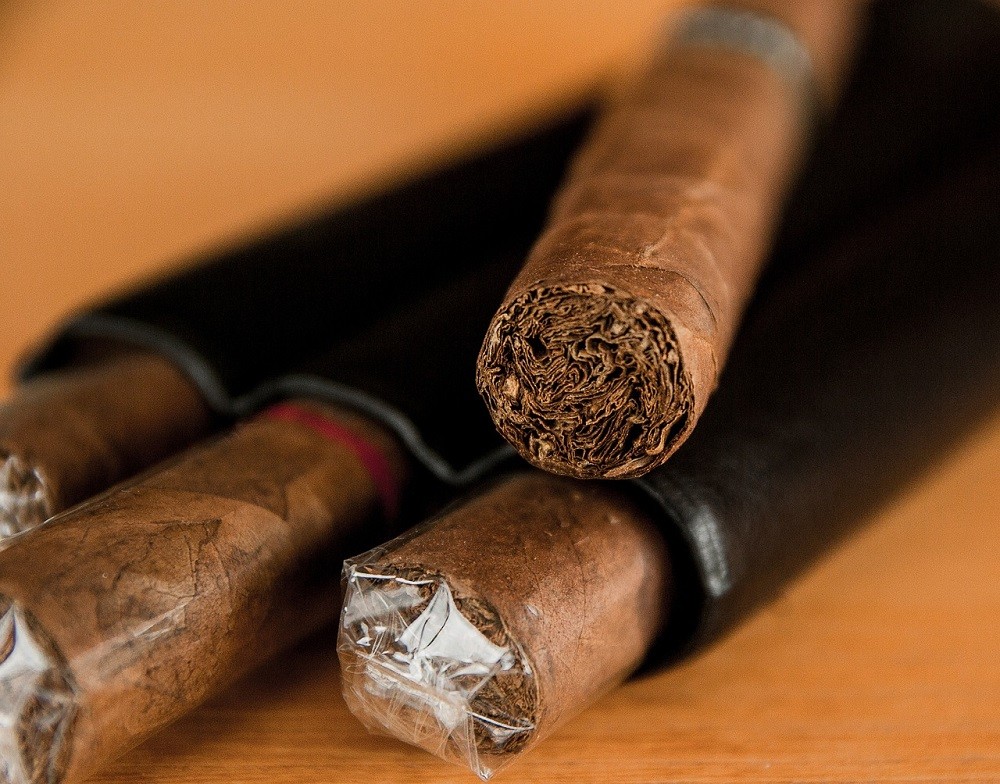The Esteemed Gentleman Articles
How To Properly Store Cigars - Tips On How To Find The Right Humidor For You
Properly storing your cigars greatly reduces their chances of drying up, cracking, or becoming the perfect starting point for a cigar beetle infestation that could potentially ruin your entire collection. Investing in a quality humidor will keep your collection fresh and lasting for years to come.
Like other investments, you should do some research before spending any money, so in this article we will explain:
- What a humidor is
- Different types of humidors
- How to choose the right humidor for you
- Other tools you will need
- How to season a humidor
- How to maintain a humidor
What Is A Humidor?
A humidor is a special storage device designed for keeping cigars at ideal humidity and temperature levels to prevent them from drying out and cracking. These devices can range from small, handheld travel humidors that hold anywhere from 1-10 cigars all the way to large units that can hold thousands at a time.
Like any investment, it's best to take precautionary measures to ensure the safety and longevity of your items. Even if you only have a few cigars a year, a humidor will ensure that they stay fresh and ready to cut and light whenever the opportunity arises.
Tip: Remember to keep your humidors in a cool, dry place and avoid direct sunlight. Some types of humidors do not have temperature control, so it's best to monitor them with a watchful eye and a hygrometer that can read temperatures as well as humidity levels.
What Are The Different Types Of Humidors?
The most common type of humidor is the desktop humidor. These are decorative wooden boxes with a Spanish cedar lining on the inside. They may be engraved, have a glass viewing top, or be left bare. Inside, you may find shelves or dividers. These are used to regulate airflow between cigars and prevent over-crowding. Many desktop humidors will hold 20-100 cigars, but larger models are available.
You may also see larger humidor cabinets that can be as tall as a bookshelf. These humidors contain Spanish cedar shelves that can hold full boxes of cigars. They will often have a hinged glass door. These are ideal if you have a large collection.
An upgrade from the large humidor cabinet is the wineador. These are electronic versions of humidor cabinets and allow more control over parameters such as ambient temperature. Like a wine fridge, wineadors are typically made of metal and plastic and provide air-tight storage. Some wineadors contain small fans while others do not. We recommend adding fans to keep air circulating around your cigars.
Not just for storing leftovers, Tupperware can be used for cigar storage as well. Tupperdors, as they're called in the cigar community, are your standard air-tight plastic containers that you typically use to store last nights' dinner. Just add your cigars, a humidification device, and an optional piece of Spanish cedar, and you're set. You can also add a small hygrometer if you want to check the %RH and temperature levels.
If you have a large collection of cigars but don't want to spend money on multiple cabinets or wineadors, a coolidor may be your best option. Start with a cooler that you'd take camping or to the beach, give it a good wash inside and out, then place a layer of Spanish cedar on the bottom and add your cigars. Use non-spillable humidification packs like Boveda and a hygrometer, and you're set.
If you're someone who only has a handful of cigars a year or was gifted some that you'd like to enjoy at a later date, a large mason jar or air-tight hinged glass jar will suffice. Add your cigars and a humidification pack to a clean jar and you're set. Depending on the size of the jar you're using, you may be able to fit a hygrometer inside as well.
How To Find The Right Humidor
Be sure to choose a humidor that can accommodate your collection (or what you plan to keep on hand at any given time) plus an additional 25%. This will prevent overcrowding and allow extra space should you be gifted cigars or find an incredible sale on your favourite stick.
Cigars come in a variety of shapes and sizes. Keep that in mind when you're deciding on which size of humidor to get. You may end up with a longer lancero that may not fit comfortably in your humidor. Resist the urge to squish your cigars. Squishing cigars together can cause them to deform, which can lead to burn issues when it comes time to cut and light.
No matter what type of humidor you choose, you should always inspect it for cracks, chips, and a tight seal. Even a small crack can compromise the conditions inside the humidor. The lid (or door) should open and close easily and have no gaps.
Some wineadors have a spill tray in the back that is designed to drain excess moisture. If you live in a hot, dry climate, you may find that your wineador temperature and/or humidity won't stay consistent. Simply plug the hole with a non-toxic, scent-free putty or hot glue. This will keep the environment inside the wineador stable.
Can I Use A Cigar Box As A Humidor?
No, a cigar box should not be used as a humidor. Cigar boxes are typically constructed with a standard hinged lid that you would find on a watch box or jewelry box, not like the lids on humidors that are designed to seal and keep in humidity. They are designed for ease of transport and a way for tobacconists to display the products in the store.
Even if the box is still wrapped in plastic, the cigars will dry out over time. However, you can store cigar boxes inside your humidor if you have enough space to do so.
Why Use Spanish Cedar In Humidors?
Spanish cedar has become the gold standard for cigar storage for many reasons including its natural aroma, moisture regulating capabilities, insect-repelling properties, and resistance to mold and fungus.
Spanish cedar can be purchased at some hardware stores, but if you are lucky, you may just find small pieces from leftover cigar boxes at your local tobacconist. It never hurts to ask them next time you're in their store.
Other Tools You Will Need For Your Humidor
For peace of mind, it is worth investing in a tool called a hygrometer. A hygrometer reads the relative humidity level (which is often referred to as %RH), and some models also read the temperature. It is best to get a digital hygrometer since they are easily calibrated, and the digital screen is easier to read than some of the analog variants.
You also require a humidification device. This can be as simple as putting some distilled water in a container, but we highly recommend using two-way humidification packs. They're worry-free, spill-free, and remove excess humidity. Boveda offers a variety of these humidification packs in different sizes and are the go-to brand for many aficionados.
How To Calibrate A Hygrometer
Calibrating a hygrometer is something we recommend doing as soon as you take it out of the package. The easiest way to calibrate a hygrometer is to place it in a resealable plastic bag with a bottle cap full of salt with just enough distilled water to dampen it.
Place both the hygrometer and the bottle cap in the plastic bag, seal it, and leave it for at least three to four hours. You should read 75% RH. If not, adjust your hygrometer to read 75% RH. Repeat the test once more if you are unsure. Be sure to calibrate your hygrometer before you season your humidor.
How To Season A Humidor
Once you bring your humidor home the first thing you need to do is season it. Depending on the size of your humidor this can take anywhere from a couple days to a couple of weeks. Seasoning a humidor helps cigars retain their humidity and creates a better seal for the lid, which prevents humidity from leaking out.
The two most popular ways to season a humidor is with distilled water and using a Boveda Seasoning kit. Never use regular tap water in your humidor.
Seasoning A Humidor With Distilled Water
The distilled water method involves distilled water, a container, a hygrometer, and a new sponge (if you want to wipe down your cedar). If you are seasoning a small desktop humidor, you can simply pour distilled water into a container, place it in your humidor along with your hygrometer and any shelves and dividers, close the lid, and check on it every few days until the %RH stabilizes.
If you want to speed up the process or have a larger humidor, soak your new sponge in distilled water, squeeze out the excess moisture, then give your humidor a wipe down. Ensure to wipe up any drops and excess to prevent the cedar from warping.
Once you have given the cedar two or three passes with the sponge, leave a container or two of distilled water in the humidor and monitor it until the %RH stabilizes.
Some aficionados recommend making a 50/50 solution with distilled water and propylene glycol, but distilled water on its own works just as well.
It is perfectly fine to be reading humidity in the 80% range for the first few days. Once it has stabilized around 68-72%, you can begin adding your cigars.
Seasoning A Humidor With Distilled Water Using A Boveda Seasoning Kit
Boveda offers a seasoning kit that comes with everything you'll need to get your humidor up and running. Be sure to purchase the correct number of seasoning packs before seasoning your humidor. Boveda recommends one Size 60 for every 25 cigars your humidor can hold.
Once you have the correct amount, simply place them in your humidor along with any dividers and shelves, add your hygrometer, close the lid (or door), and wait two weeks (Boveda says to resist the urge to open sooner, even if your hygrometer is reading stabilized levels), remove the Boveda seasoning packs and replace them with the desired Boveda %RH packs.
What Are The Ideal Temperature And Humidity Settings For A Humidor?
There is a bit of leniency when it comes to temperature and humidity settings in a humidor. The rule of thumb that most people adhere to is 70F (21C) and 70% RH, although you can be a few degrees and %RH above or below, depending on your preference. Ideally, you want to stay between 65 and 72 for both parameters.
You may notice some fluctuation in your readings throughout the year. If you live in an area that has a wide range of temperatures, we recommend adding extra humidification packs to your humidor and moving it (if possible) to areas in your home where the temperature is stable (i.e.: away from windows and direct sunlight).
If a cigar is subjected to temperature or relative humidity outside of the ideal parameters, you may experience issues such as inconsistent burn, tunnelling, excessive coning, wrapper cracks, or multiple relights.
How Long Will Cigars Last In A Humidor?
Under ideal conditions, your cigars will last forever in a humidor. Some cigar connoisseurs argue that cigars can lose their flavours after 8-10 years, even in ideal conditions. Depending on the blend of tobaccos, some cigars may remain flavourful while others may become bland. There's no real way to test this other than aging your cigars and finding out for yourself.
Aging your cigars, like wines, can bring out new flavours. Allowing your cigars to sit will soften the flavours in the tobacco, giving it a more mature, complex flavour profile. You can experience this yourself by purchasing two of the same cigar, having one right away and writing down the flavours you experience, and letting the other one sit for at least six months before enjoying it. Compare your notes and see what has changed.
You may notice small bumps on your cigar's wrapper, known in the cigar community as "tooth". This process occurs when the oils in the leaf build up, creating bumps that resemble goosebumps.
For tips on how to get the most out of your cigar, read our guide on how to properly light and toast the foot of your cigar. You'll be glad you did.
How Long Should A Cigar Stay In My Humidor Before I Can Smoke It?
Cigars purchased from your local shop can usually be enjoyed right away, but it's always best to ask the tobacconist at the store what they recommend. If the cigars were just put out earlier that day, they may not have had a chance to acclimate.
Some cigars are in high demand, so they hit shelves, ready to be sold, as soon as they arrive in store. Other cigars are allowed to rest in a humidor in the back for a while before being placed on the shelves.
If you order your cigars online, it's best to let them rest for a minimum of two weeks before enjoying them. Resting lets them acclimate to your humidor's temperature and humidity settings. This also reduces their chances of cracking due to sudden changes in temperature or humidity if you want to have one right away.
How To Maintain Your Humidor
Once you've seasoned and filled your humidor, not much more maintenance is needed. Check your hygrometers often to ensure that your temperature and humidity levels are within your desired parameters and top up your humidification devices if your %RH drops.
If your humidor doesn't have a fan, we recommend rotating your cigars periodically, which means moving your cigars from the bottom to the top and vice versa. This ensures that all the cigars in your humidor will get adequate humidity. Plus, it gives you a chance to inspect them for damage and cigar beetles.
What About Cellophane?
A common question in the cigar community is whether to keep the cellophane on cigars or remove it before adding them to your humidor. Ultimately this comes down to personal preference, but if your cigars come in cellophane, we recommend leaving it on. The benefits of keeping your cigar in cellophane are many, and include
- Cellophane wrapping greatly reduces the chances of a cigar beetle infestation. The beetles can't chew through cellophane, so if you do end up with cigar beetles, they will be contained to just one cigar.
- Your cigars won't go moldy, since mold spores can't grow on cellophane. The wrapping also keeps dust, dirt, and other foreign particles from landing on your cigars.
- Cellophane protects cigars from damage. Some wrappers are delicate and grabbing them too hard may cause them to crack. It will also prevent your friends from leaving fingerprints if they peruse your collection with dirty hands.
- Cigars in cellophane won't dry out if they're left out of the humidor for a day or two (which makes them ideal if you're taking a cigar with you to the golf course or camping).
Does Freezing Cigars Make Them Last Longer?
Storing cigars in the freezer will not make them last longer but will have the opposite effect. Both fridges and freezers are designed to remove moisture from the air and are much too cold for storing cigars long-term.
There is one exception where freezing your cigars may be appropriate: if you have evidence of cigar beetles.
Cigar manufacturers often freeze their tobacco before rolling it into cigars to kill off any beetles, larvae, or eggs that may have been laid prior to harvest. This is a rather new process, but the possibility of cigar beetles in your cigars still exists.
How To Effectively Deal With Cigar Beetles
Telltale signs of cigar beetles include small pin holes on your cigars, and cigar "dust" either in the cellophane packaging or in your humidor if your cigars aren't in cellophane. We recommend visually inspecting any new cigars you are adding to your humidor and checking your collection at least once every 3-6 months depending on the size.
If your humidor temperature is above 75F for more than 12 hours, check your cigars as this is the ideal temperature for cigar beetle eggs to hatch.
If you discover that your cigars have become the ideal meal for cigar beetles, fret not as you may be able to save the unaffected cigars. Here are the proper steps to take to minimize the effects of cigar beetles:
- 1. Discard any affected cigars.
- 2. Place unaffected cigars into re-sealable Ziploc bags and place them in the fridge for a minimum of 6 hours (we recommend 24 hours).
- 3. Move the cigars from the fridge to the freezer for a minimum 24 hours up to 72.
- 4. After the allotted time is up, move your cigars back into the fridge for at least 24 hours.
- 5. As an optional step, remove your cigars from the fridge and put them in a place where they will return to room temperature.
- 6. Place cigars back into your humidor and let them rest for at least a week before smoking them.
Tip: Do not put your cigars in the microwave. This will ruin them instantly. Patience is key.
Summary
Whether you're a casual cigar enjoyer or have a large collection, understanding the importance of proper storage will prevent your cigars from drying out, cracking, growing mold, or developing a beetle infestation, ultimately preserving your cigars and saving you money.
When you subscribe to the article, we will send you an e-mail when there are new updates on the site so you wouldn't miss them.













Comments